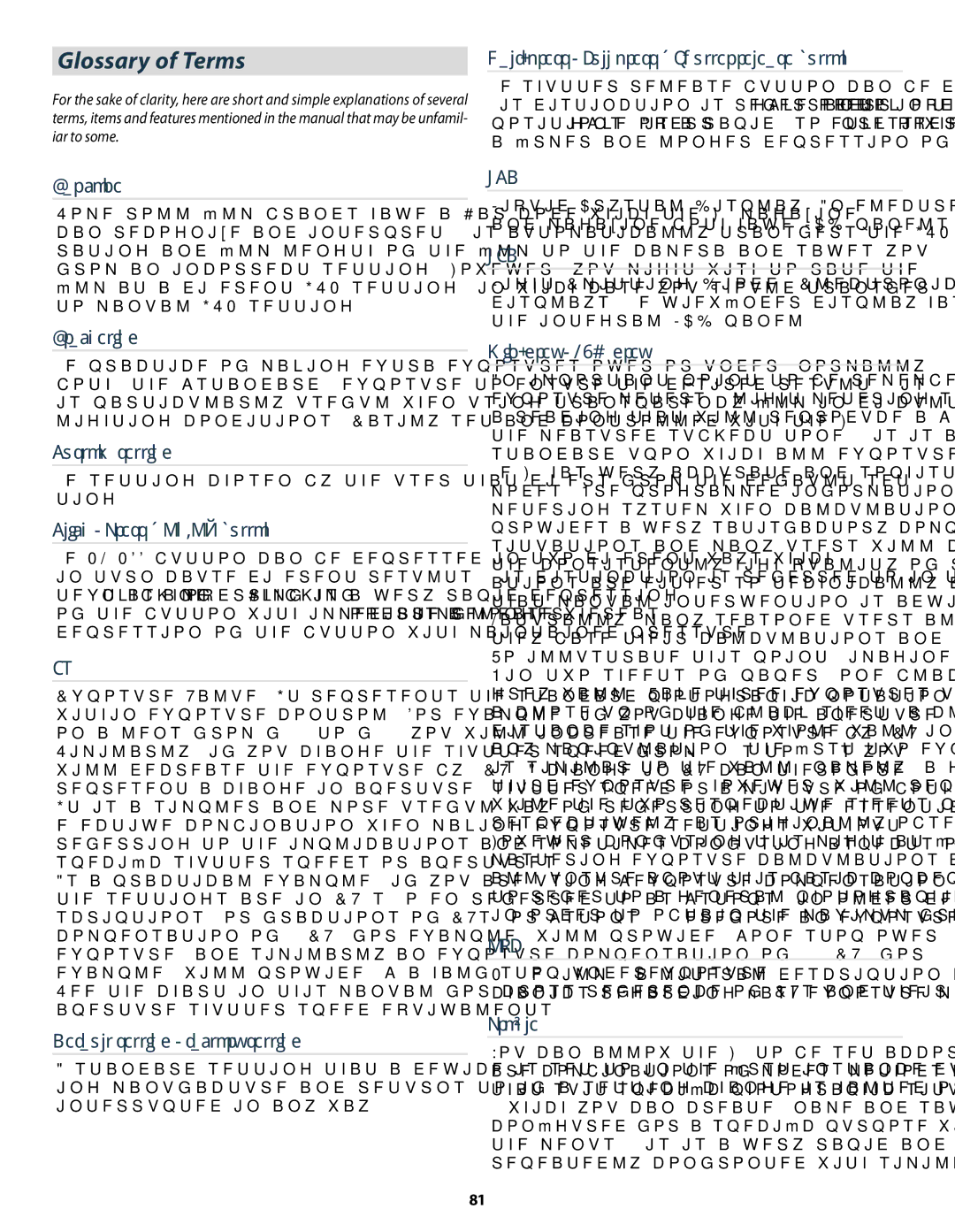
Glossary of Terms
For the sake of clarity, here are short and simple explanations of several terms, items and features mentioned in the manual that may be unfamil- iar to some.
Half-press / Full press – Shutter release button
The shutter release button can be depressed in two different ways. This distinction is referred to in the text as
Bar code
Some roll film brands have a Bar code which the H2 magazine can recognize and interpret. This automatically transfers the ISO rating and film length of the film to the camera and saves you from an incorrect setting. However, you might wish to rate the film at a different ISO setting, in which case you should transfer to manual ISO setting.
Bracketing
The practice of making extra exposures over or under (normally both) the ‘standard’ exposure to ensure the desired result. This is particularly useful when using transparency film in difficult lighting conditions. Easily set and controlled with the H2.
Custom setting
The setting chosen by the user that differs from the default set- ting.
Click / Press – On.Off button
The ON.OFF button can be depressed in two different ways which in turn cause different results. This distinction is referred to in the text as clicking and pressing. Clicking is a very rapid depressing of the button with immediate release whereas pressing is a longer depression of the button with maintained pressure.
EV
Exposure Value. It represents the standard photographic notation within exposure control. For example, if you change the aperture on a lens from f/11 to f/8, you will increase the exposure by 1EV. Similarly, if you change the shutter speed from 1/15s to 1/60s you will decrease the exposure by 2EV. A change in EV can therefore represent a change in aperture, shutter speed or a mixture of both. It is a simpler and more useful way of referring to the essential effective combination when making exposure settings without referring to the implications and sometimes confusing aspects of specific shutter speeds or apertures.
As a practical example, if you are using ‘exposure compensation’, the settings are in EV’s (often referred to as ‘stops’ in older de- scriptions) or fractions of EVs (or ‘stops’). Therefore an exposure compensation of +1EV, for example, will provide ‘one stop over- exposure’ and similarly an exposure compensation of
See the chart in this manual for cross reference of EVs and their aperture/shutter speed equivalents
Default setting / factory setting
A standard setting that a device is set to in the first instance dur- ing manufacture and returns to if a setting change is halted or interrupted in any way.
LCD
Liquid Crystal Display. An electronic information panel. The grip and magazine both have LCD panels.
LED
Light Emitting Diode. Electronic devices used in information displays. The viewfinder display has LED’s to the left and right of the integral LCD panel.
Mid-grey / 18% grey
An important point to be remembered is that all photographic exposure meters / light metering systems are calibrated to provide a reading that will reproduce a
To illustrate this point, imagine the following example:
Pin two sheets of paper, one black and the other white, onto a grey wall. Take three exposures using an average light reading; a
However confusing this might at first seem, it is fundamental to mastering exposure calculations and exposure control. If you are at all unsure about this basic concept, you are strongly recommended to refer to a general photographic manual for a fuller explanation in order to obtain the maximum from your H2.
OTF
Off The Film - a literal description of the light measurement me- chanics regarding flash exposure measurement.
Profile
You can allow the H2 to be set according to ‘profiles’. These profiles are combinations of modes, methods and settings (custom or default) that suit specific photographic situations. By using a personal profile
-which you can create, name and save - the camera is immediately configured for a specific purpose without any need to check through the menus. This is a very rapid and secure way of working when repeatedly confronted with similar photographic situations.
81
